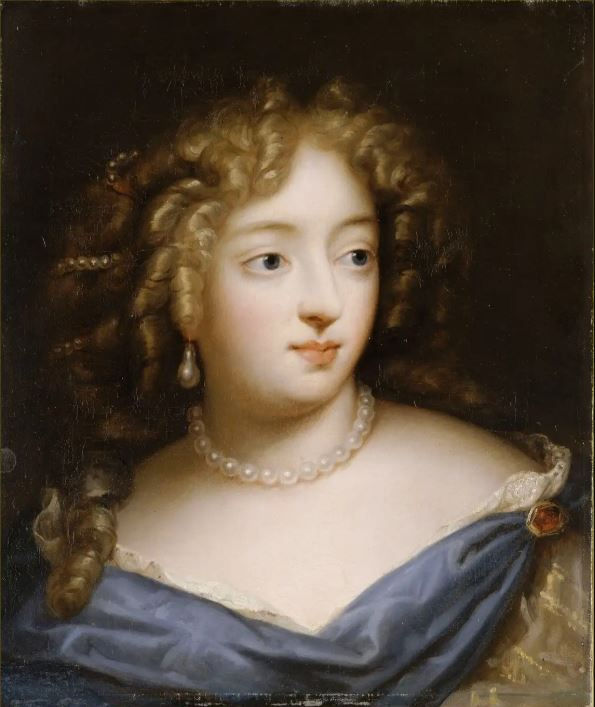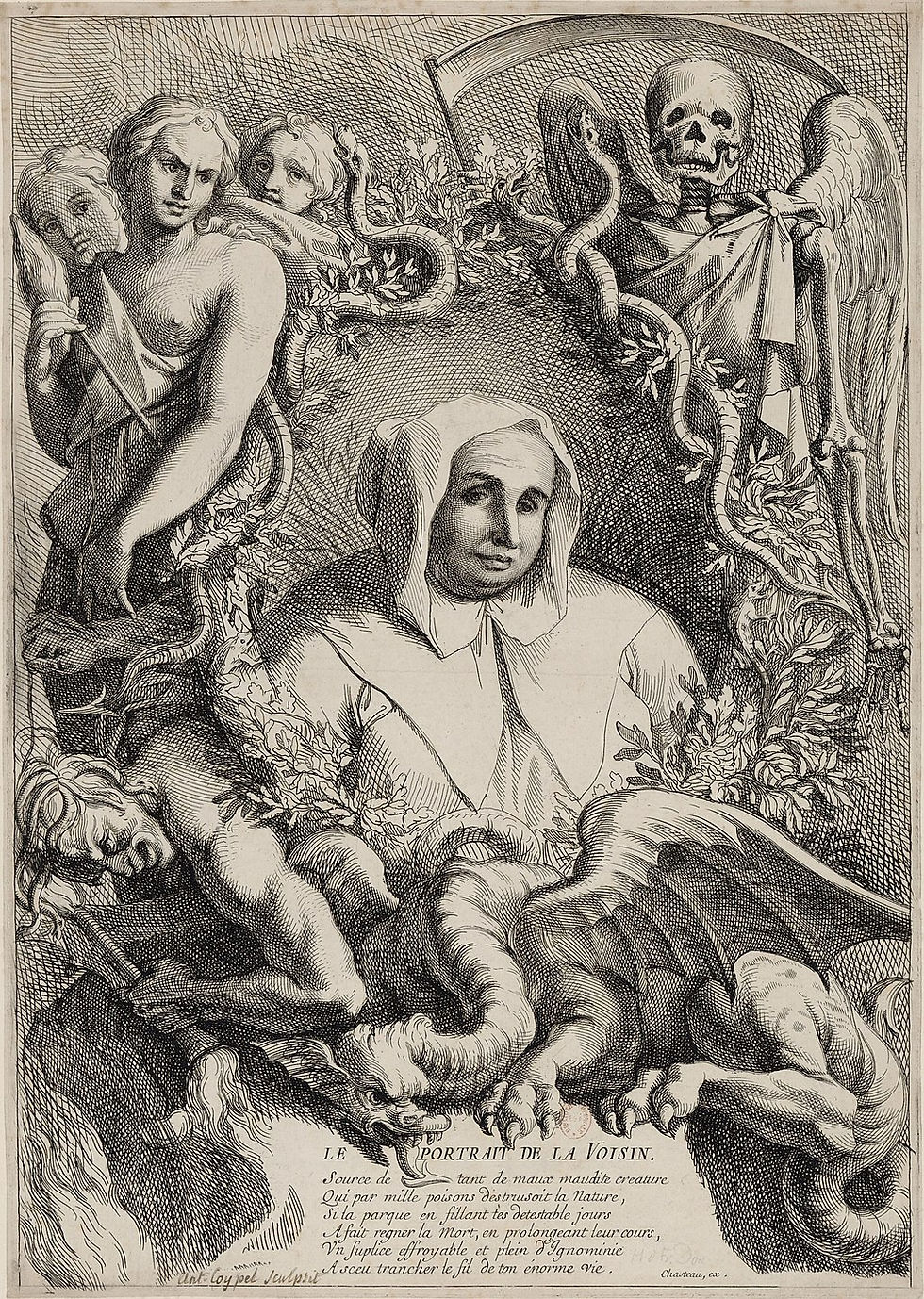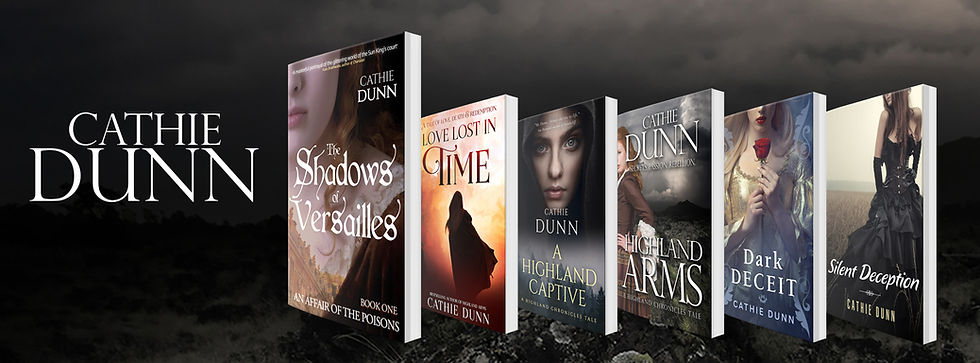The Dark Side of the Sun King's Dazzling Court
- DK Marley
- 4 days ago
- 5 min read
Meet Madame de Montespan, the Sun King’s mistress with a shocking secret!
Nearly 1 1/2 years ago, I watched a fascinating programme on France 3 about Madame de Montespan, the longtime maîtresse en titre of the Sun King, Louis XIV.
For many years, I’ve been intrigued by Louis XIV and his court, and especially by an event I'll mention below. So it was time I explored that era – and its people – further…

Born Françoise de Rochechouart, of old French nobility, she was married to the Marquis de Montespan. She was supposedly in love with another young noble, but as he made the silly – and illegal – decision to take part in a duel, he had to flee the country, so Montespan it was. They did like each other, which helped.
Thanks to her family’s influence, in her twenties, she became a lady-in-waiting to Queen Maria Theresa, the somewhat naïve but very Catholic Austrian-Spanish wife of the king. But already Françoise set her sights higher: to Louis himself!
Over time, she managed to nudge the king’s beloved mistress, young and pretty Louise de la Vallière, off her pedestal after the king had sexual relations with both ladies – and the queen – for a good while.
Apparently, Louis went to bed (his, to start with) first publicly, then in private, then he visited one mistress after the other. Lastly, he joined the queen, often around 5am. As you can guess, the king needed little sleep.
Seeing her rival rise in the king’s affection, young Louise fled to a Carmelite convent, and Françoise’s path to the king was clear. But as we discover, there may have been other aspects that made poor Louise decide to flee to the safety of a convent.
That’s how Françoise, Madame de Montespan, a highly intelligent, witty and ambitious woman, took over. She reinvented herself as ‘Athenaïs’ – alluding to the Greek goddess of wisdom and strategy. Soon, she organised dances and plays, helped with the designs for the new palace at Versailles Louis had expanded at that time, and played a pivotal role in his daily life. He often sought her advice on all sorts of matters.
Paintings show her through different stages in her life. She detested the queen, and acted as if she were in her place. All with the king’s tacit approval. Poor Maria Theresa.
In over ten years, Françoise bore the king seven living children, which he legitimised. They held royal titles and were treated as his own, and later married off to other members of European nobility. We can well imagine what the queen thought of all that!
But eventually, Françoise went too far. Realising that the king’s attention began to wander after over a decade – she was by then overweight as a result of all her pregnancies and had become moody and jealous – she sought to retain his affection by other means: love potions that she’d used early on to gain his favour. It sounds harmless enough, but in reality, it wasn’t.
As the so-called Affair of the Poisons gripped Paris from the mid-1670s onwards, implicating many nobles alongside hundreds of fortune-tellers, necromancers and wise-women, one name kept cropping up in admissions under torture in the late 1670s: Madame de Montespan, the king’s favourite mistress.
As it transpired, her darkest deeds went back to the 1660s, a time when she pushed Louise de la Vallière off her pedestal. She was suspected to have used potions (added to wine or food) to gain the king’s favour, and bought poisons to try to rid herself off her rivals.
And now she was doing it again. Potions for the king, poison for his new favourite. This could not be ignored, not even by her lover, the king. And to top it all off, Françoise was rumoured to have taken part in black masses, in which sacrifices involved babies, ostensibly to gain the king’s love! I wonder how Louis reacted to reading about this.
Meanwhile across Paris, midwives, priests, charlatans, alchemists, herbalists, and ladies and lords of noble families, were all caught up in this scandal. The major culprits (from the lower classes, of course) were burnt at the stake. All those were women. Ordinary men, criminals, were simply hanged. The majority would suffer the most horrific torture prior to their deaths. One of those was the most influential women of the times, who gave away surprisingly little: Catherine Monvoisin, called La Voisin, purveyor of potions, poisons, and black masses.

The nobles were usually banished or, in extreme cases, beheaded. Some were later allowed to return, such as the distinguished Duke de Luxembourg, a highly successful military commander. And in the end, by royal ‘lettre de cachet’, many dozens of men and women were locked up in remote fortresses, not allowed to receive visitors. They would never again speak to anyone. They could never reveal their knowledge…
(But more about those other suspects in another post.)
In typical fashion, Louis had all reports that mentioned Françoise’s name burnt. But with these revelations, she lost her influence over him, and was swiftly banished to quarters further away from the king at Versailles. Her fall from grace was steep and immediate.
Françoise, Madame de Montespan withdrew from court and found solace in faith. But oh, how she must have reminisced about the days she wielded power.
Only much later did original records kept by the chief of the Paris police, Gabriel Nicolas de la Reynie, emerge. A tenacious investigator, he would leave nothing to chance and kept meticulous records of all interrogations. These notes revealed Françoise’s true involvement in the dark arts.
The Affair of the Poisons is one of my favourite historical events. It’s a fascinating hotchpotch of a noble class desperate to keep the king’s favour, to gain the love of a lord or lady, or to seek power, and the dark underworld of Paris with its criminals, chancers, and poisoners.

I'd always wanted to write about this event, and after that programme, I scribbled down the outline of a new novel. This soon turned into The Shadows of Versailles, the first in a new series of dark historical novels set during the Affair of the Poisons. Madame de Montespan features briefly, but she will return more prominently in later instalments.
If you are curious about The Affair of the Poisons, there are a few books I can highly recommend:
Anne Somerset’s The Affair of the Poisons
Judith Merkle Riley’s The Oracle Glass
Kate Braithwaite’s Charlatan
And in French:
Claude Quétel's L’affaire des poisons (an in-depth account)
About Cathie Dunn:
Cathie writes historical fiction, mystery, and romance, set in different periods. She loves exploring historic sites to get a deeper sense of ‘being in place’, and her novels have been praised for their realistic depiction of the past.
Discover her novels here: author.to/CathieDunn

















Thank you so much for hosting me. I'm hope your followers find Madame de Montespan as (literally) intriguing as I do. Thank you, Cathie xoxo